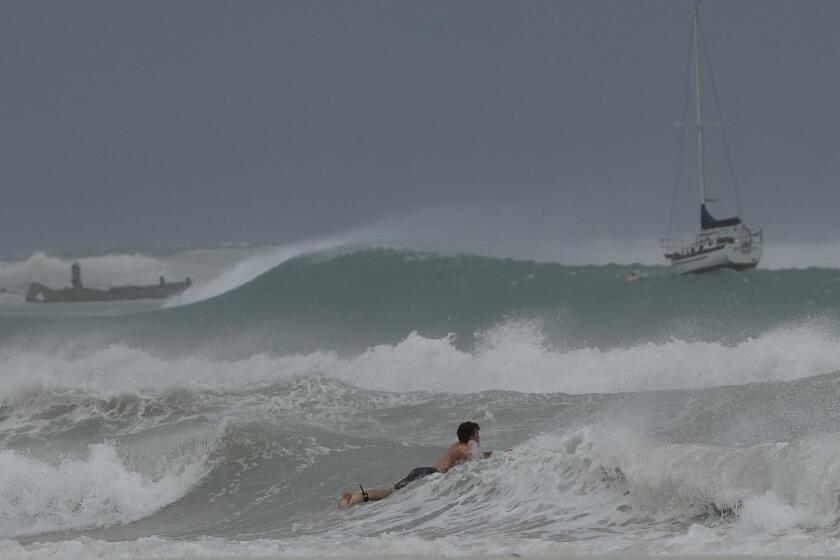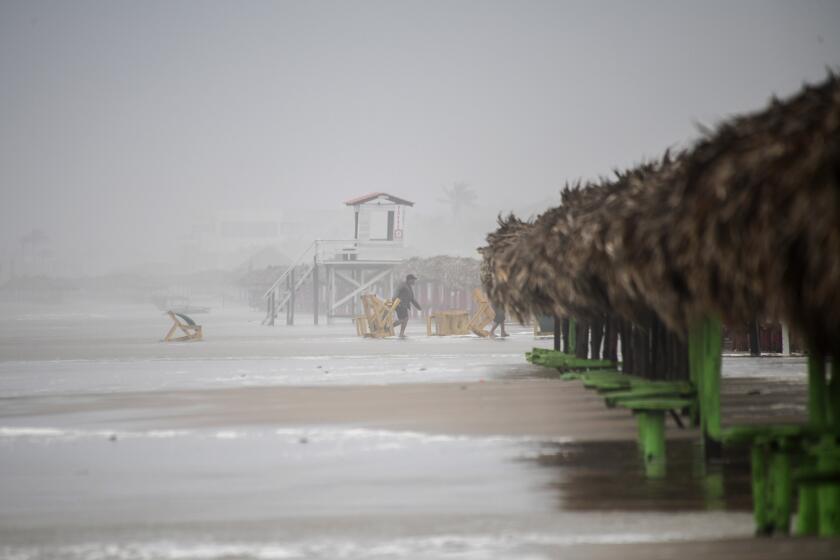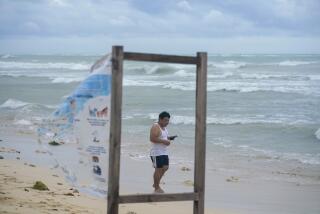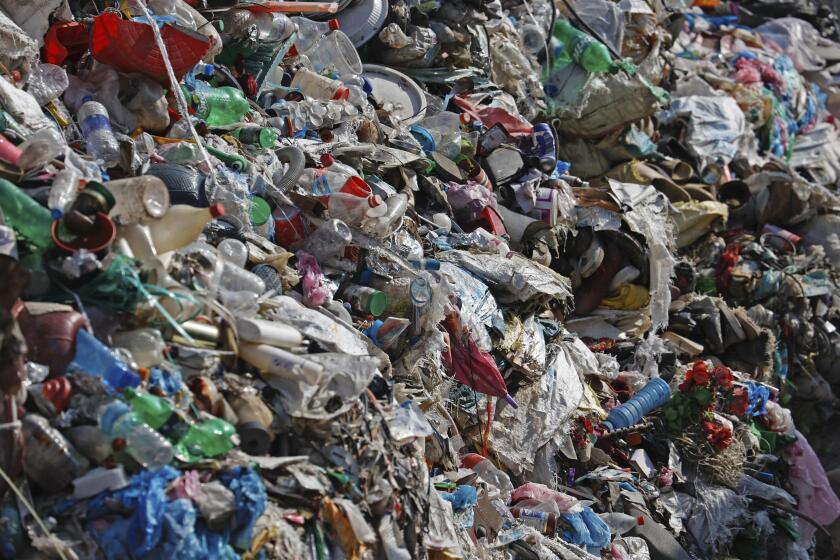Beryl bears down on Texas, where it’s expected to hit Monday, regain hurricane strength

Powerful winds and rain approached Texas on Sunday morning as Beryl was expected to turn from a tropical storm into a hurricane overnight and pound a long stretch of coast with heavy downpours, howling gusts and dangerous storm surge.
A long stretch of Texas’ shoreline was under a hurricane warning as Beryl’s outer bands were forecast to begin lashing the coast Sunday. Landfall was expected early Monday and officials in several coastal counties issued voluntary evacuation orders while urging tourists along the beach to leave.
The earliest storm to develop into a Category 5 hurricane in the Atlantic, Beryl caused at least 11 deaths as it passed through the Caribbean last week. The storm has tipped doors, windows and roofs off homes with devastating winds and storm surge fueled by the Atlantic’s record warmth.
“We’re seeing the outer bands of Beryl approach the Texas coast now and the weather should be going downhill especially this afternoon and evening,” Eric Blake, a senior hurricane specialist with the National Hurricane Center, said Sunday morning. “People should definitely be in their safe space by nightfall and we’re expecting the hurricane to make landfall somewhere in the middle Texas coast overnight.”
Hurricane Beryl’s growth into an unprecedented early storm shows the literal hot water the Atlantic and Caribbean are in right now.
Already three times in its one-week life, Beryl has gained 35 mph in wind speed in 24 hours or less, the official weather service definition of rapid intensification. Beryl’s explosive growth into an unprecedented early whopper of a storm shows the literal hot water the Atlantic and Caribbean are in right now and the figurative hot water the Atlantic hurricane belt can expect for the rest of the storm season, experts said.
Texas officials warned people along the entire coastline to prepare for possible flooding, heavy rain and wind. The hurricane warning extended fom Baffin Bay, south of Corpus Christi, to Sargent, south of Houston.
In Corpus Christi, officials asked visitors to cut their trips short and advised residents to secure homes by boarding up windows and using sandbags to guard against flooding.
Debby, Oscar, Tony: What’s in a storm’s name? How does a tropical storm or hurricane get its moniker? Will yours come up on the forecasters’ list?
Ben Koutsoumbaris, general manager of Island Market on Corpus Christi’s Padre Island, said there has been “definitely a lot of buzz about the incoming storm,” with customers stocking up on food and drinks, particularly meat and beer.
The White House said Sunday that the Federal Emergency Management Agency had sent emergency responders, search-and-rescue teams, bottled water and other resources along the coast.
Some coastal cities called for voluntary evacuations in low-lying areas that are prone to flooding, banned beach camping and urged tourists traveling on the Fourth of July holiday weekend to move recreational vehicles from coastal parks. In Refugio County, north of Corpus Christi, officials issued a mandatory evacuation order for its 6,700 residents.
Lt. Gov. Dan Patrick, who is acting governor while Gov. Greg Abbott is traveling in Taiwan, issued a preemptive disaster declaration for 121 counties.
Beryl battered Mexico as a Category 2 hurricane, toppling trees but causing no injuries or deaths before weakening to a tropical storm as it moved across the Yucatan Peninsula.
Before hitting Mexico, Beryl wrought destruction in Jamaica, St. Vincent and the Grenadines, and Barbados. Three people were reported dead in Grenada, three in St. Vincent and the Grenadines, three in Venezuela and two in Jamaica.
In 2017, Hurricane Harvey lashed a wide swath of the Gulf Coast with strong winds and torrential rain from the fiercest hurricane to hit the U.S. in more than a decade, sending tens of thousands of residents fleeing the Gulf Coast.
The storm threatened oil refineries, chemical plants and dangerously flood-prone Houston, the nation’s fourth-largest city.
Associated Press writer Vancleave reported from Corpus Christi, Lozano from Houston. AP writer Mark Thiessen in Anchorage and radio reporter Julie Walker in New York contributed to this report.
More to Read
Start your day right
Sign up for Essential California for news, features and recommendations from the L.A. Times and beyond in your inbox six days a week.
You may occasionally receive promotional content from the Los Angeles Times.








